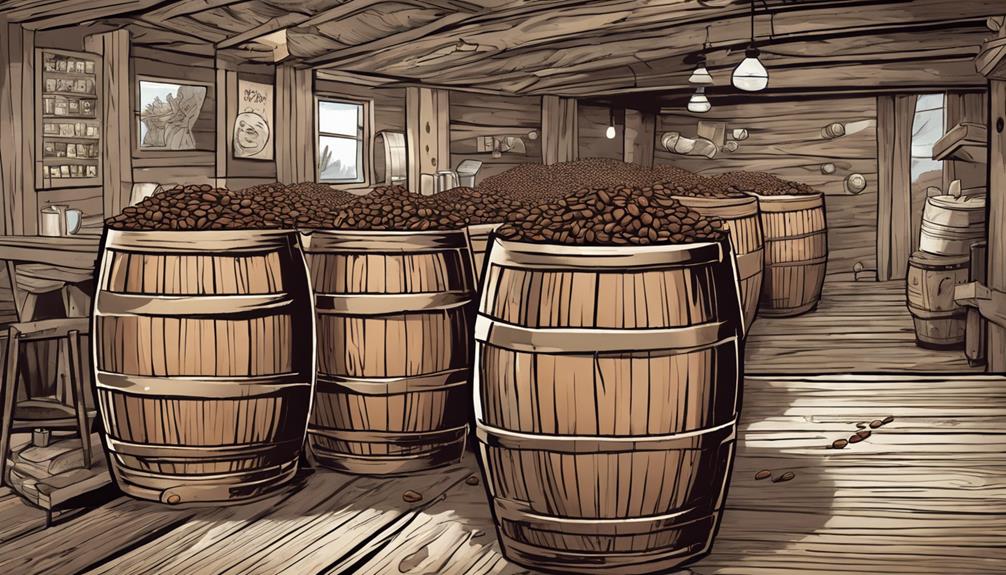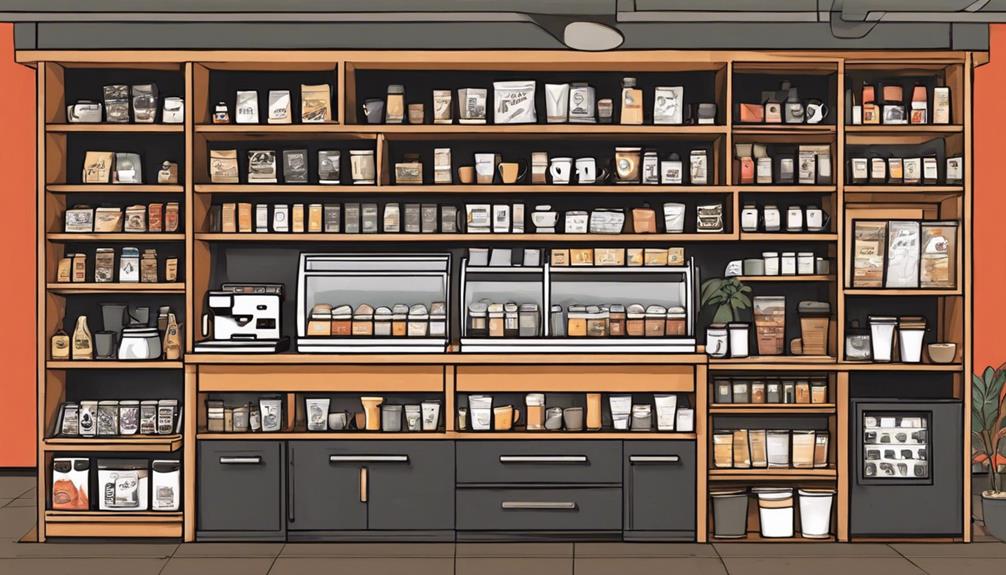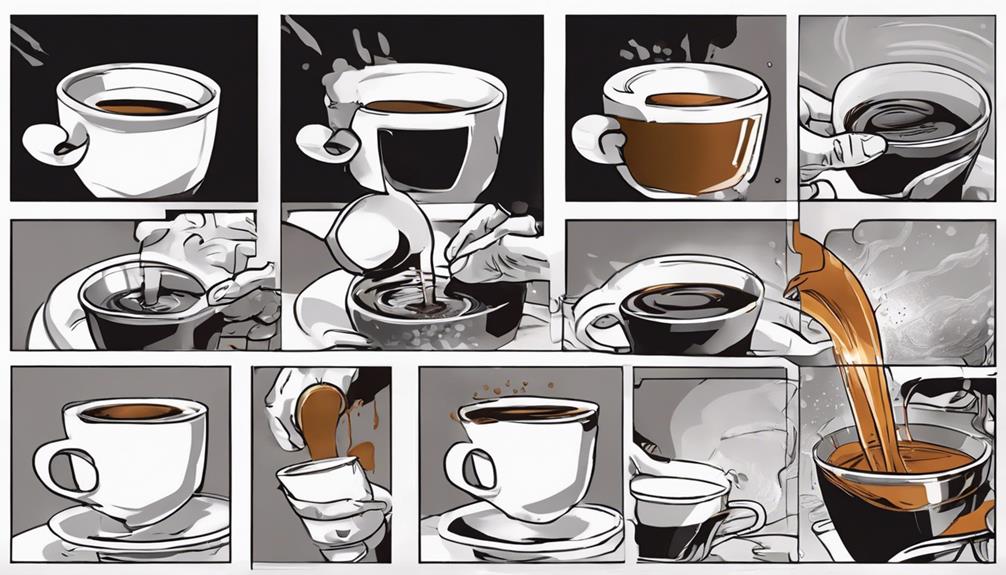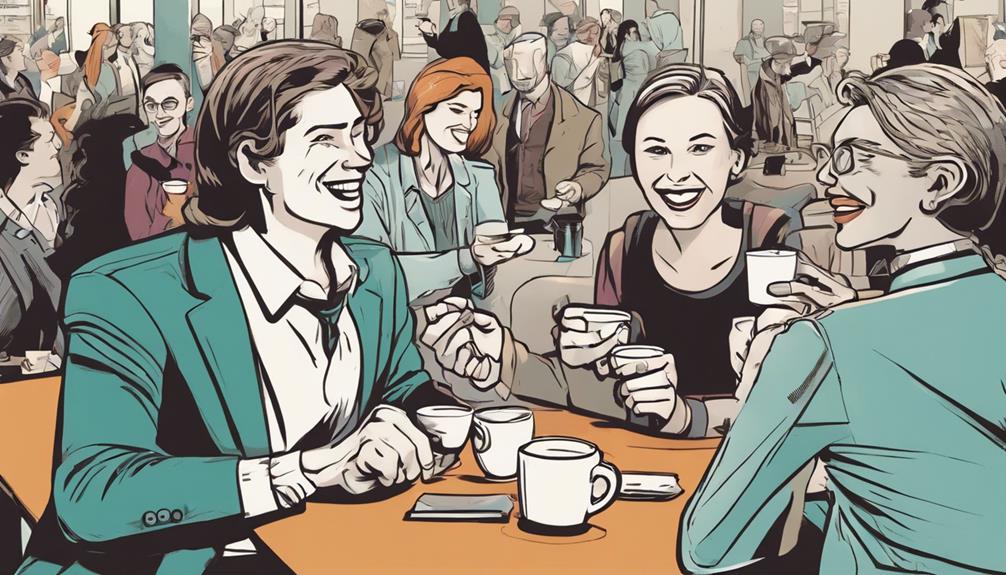To improve the flavor of your coffee beans, it is important to properly age them. Keep them in a controlled environment to absorb unique aromas. Experiment with different aging techniques for distinct characteristics. Enzymatic reactions and the length of storage time play a role in creating a nuanced taste. Use various brewing methods to unlock their full potential. Freeze the beans in airtight containers and allow them to thaw before grinding. Each brewing method will bring out different flavors, so adjust the grind size, ratios, and temperature for the best taste. Mastering the aging process will result in a more fulfilling coffee experience that you will savor.
Key Takeaways
- Proper storage in controlled conditions is crucial for aging coffee beans effectively.
- Green beans readily absorb flavors and aromas, enhancing complexity over time.
- Various maturation methods introduce unique characteristics to the beans.
- Experiment with different brewing techniques to unlock the full potential of aged beans.
- Freeze beans in airtight containers for 8-10 days before grinding for optimal flavor development.
Origins of Aged Coffee
During the 15th and 16th centuries, aged coffee emerged as a result of exposure to elements during long maritime trade routes. Green coffee beans, transported across oceans, underwent a natural aging process due to the sea air, humidity, and movement of the ships.
This unintentional aging led to a unique flavor enhancement in the beans, creating a sought-after product that delighted palates with its distinctive taste.
European merchants, noticing the transformation of the beans during these sea voyages, began intentionally storing green coffee beans in warehouses near the coast to replicate the effects of maritime trade routes. This deliberate aging process allowed the beans to develop complex flavors and aromas, making aged coffee a desirable commodity among coffee enthusiasts.
The aged coffee from this era offered a variety of flavor profiles, ranging from mellow and nutty to bold and complex. The appeal of aged coffee lay in its balance, richness, and approachability, enchanting coffee drinkers with its nuanced taste experience.
Aging Process Overview
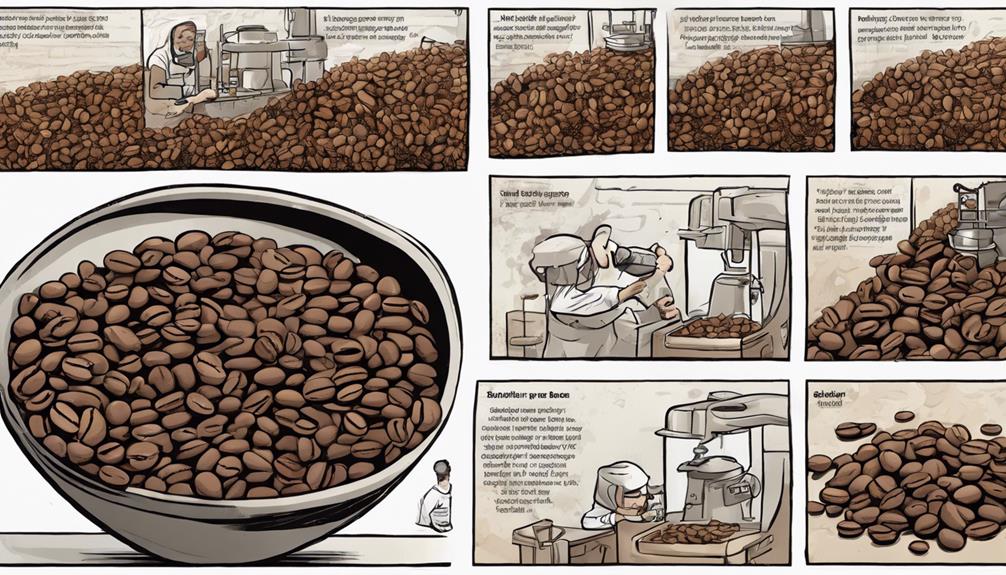
To enhance the flavors and aromas of coffee beans, a controlled maturation process is implemented, allowing for a richer and more intricate taste profile to develop.
When considering the maturation process of coffee beans, there are several key aspects to keep in mind:
- Storage: Proper storage conditions are essential for maturing coffee beans effectively. Maintaining consistent temperature and humidity levels is vital to prevent spoilage and ensure peak flavor development.
- Green Beans: Green coffee beans are the starting point for the maturation process. Their raw nature allows them to absorb flavors and aromas more readily during maturation, leading to a more pronounced taste profile.
- Maturation Methods: Various maturation methods, such as natural maturation and barrel maturation, introduce unique characteristics to the coffee beans. Each method influences the flavor evolution differently, offering a diverse range of taste experiences.
These elements collectively contribute to the intricate process of maturing coffee beans, ultimately resulting in a more nuanced and desirable flavor profile.
Flavor Evolution in Aged Coffee
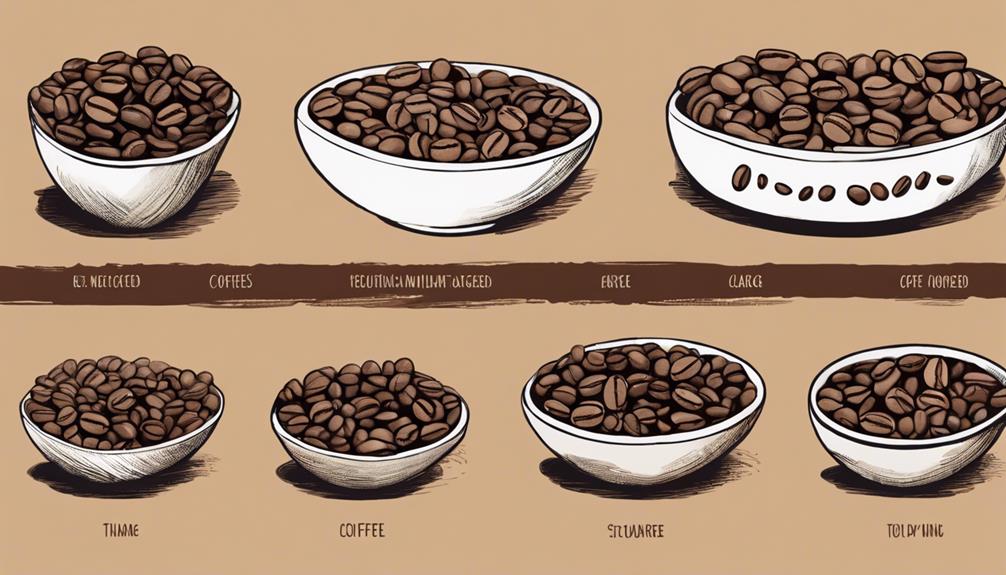
Flavor evolution in aged coffee results from enzymatic reactions and prolonged storage, enhancing complexity and developing rich, nuanced profiles.
As coffee beans age, they undergo chemical changes that lead to a transformation in taste. Aged coffee beans have the potential to exhibit a wide range of flavors, including hints of sweetness, nuttiness, spice, and chocolate.
Each sip of aged coffee offers a sensory experience that showcases the richness and depth achieved through aging. The complexity of flavors in aged coffee creates a palate-pleasing balance that captivates coffee enthusiasts.
The aroma of aged coffee beans is often more pronounced and unique, adding another dimension to the overall sensory experience. The interaction of time, storage conditions, and bean quality all contribute to the flavor evolution in aged coffee, making it a sought-after choice for those looking to explore the diverse world of coffee.
Brewing Techniques for Aged Beans
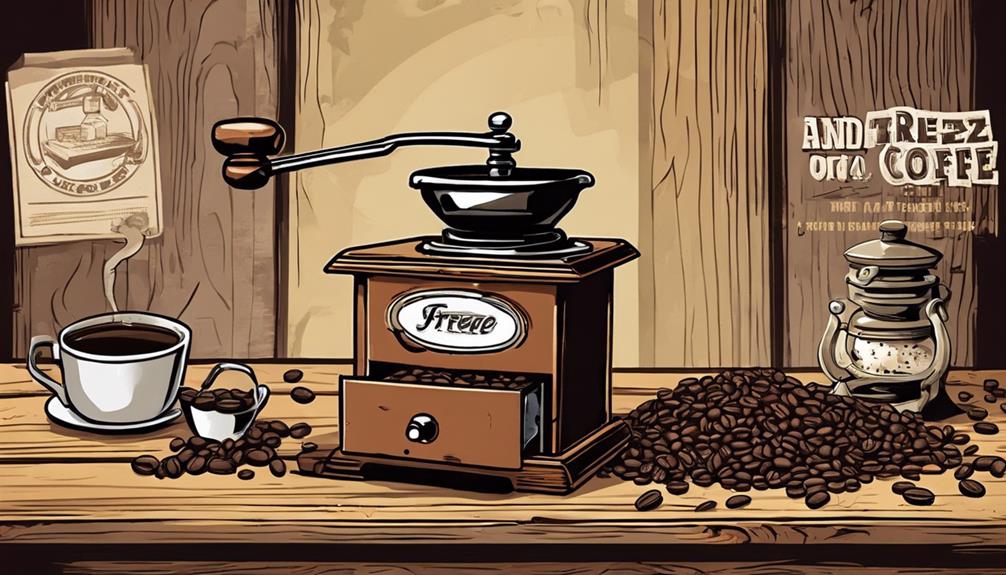
For aging beans, consider adjusting your brewing technique to extract a richer flavor profile.
- Immersion Brewing: Utilize immersion brewing methods to fully immerse the aged beans in water, allowing for a more thorough extraction of flavors and oils trapped within the beans.
- Pour-Over Techniques: Opt for pour-over techniques when brewing aged beans to enhance the clarity and subtleties of the flavors developed during the aging process.
- Cold Brew Methods: Try cold brew methods for a smoother taste experience with aged coffee beans, as the extended steeping time can bring out unique flavors without the bitterness associated with hot brewing methods.
Experimenting with a variety of brewing methods is essential to reveal the full potential of aged coffee beans. Whether it's the concentrated boldness of an espresso or the smoothness of cold brew, each method offers a different perspective on the flavor profiles that aged beans can provide.
Storage and Preservation Strategies
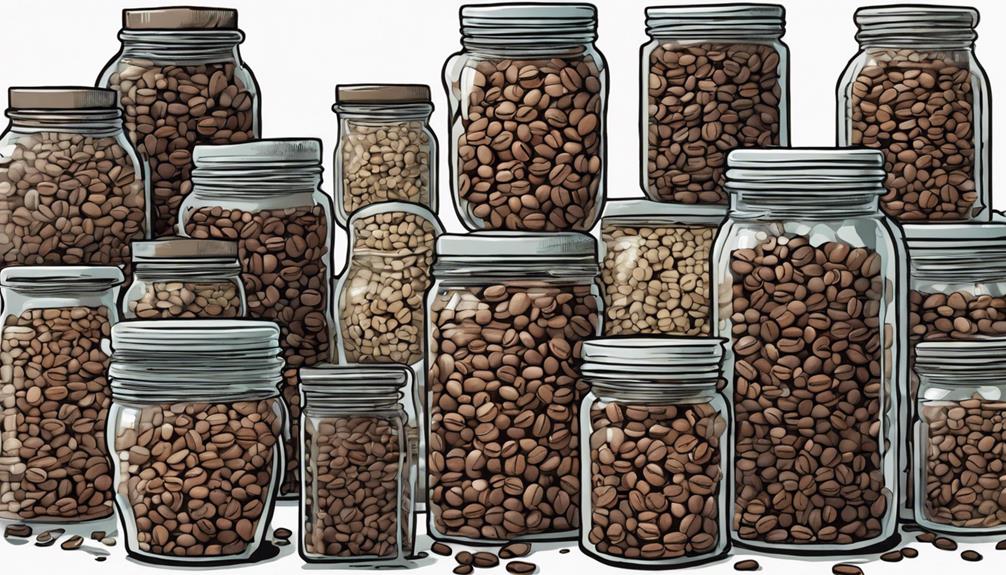
Consider implementing effective storage and preservation strategies to maintain the quality and freshness of your aged coffee beans. Freezing coffee beans in airtight containers can prevent staleness and preserve freshness for 8-10 days. Storing coffee in the freezer in portions and allowing it to warm to room temperature before grinding can maintain quality. Lighter roasts may require more resting time before freezing compared to darker roasts to preserve flavors effectively. Using a scale for precise measurements and monitoring extraction time closely can enhance the aging process of coffee beans. Adjusting the grind size, coffee-to-water ratio, and water temperature can optimize the flavor of aged coffee beans during brewing.
| Storage Strategies | Preservation Techniques |
|---|---|
| Freeze in airtight containers for 8-10 days | Allow beans to warm to room temp before grinding |
Frequently Asked Questions
Do Coffee Beans Get Better With Age?
Coffee beans do get better with age. Through controlled storage, enzymatic reactions enhance the flavor profile, leading to complex flavors, reduced acidity, and a smoother taste. Aged beans can vary in duration for a unique and nuanced taste.
How Do You Get the Most Flavor Out of Coffee Beans?
To get the most flavor out of coffee beans, store them properly in controlled conditions. Allow aging to enhance the beans' flavor complexity through enzymatic reactions. Vary aging durations for different flavor profiles, creating mellow, nutty, and complex tastes. For example, an aged coffee bean may develop a mellow taste with subtle nutty undertones after six months of aging, while a longer aging period of twelve months could produce a more complex flavor profile with hints of chocolate. These chocolate notes in coffee are highly sought after by connoisseurs and can only be achieved through proper aging techniques and storage conditions. Overall, proper aging and storage of coffee beans can significantly enhance the flavor and create a more enjoyable drinking experience. Reviving coffee plants that have lost their flavor due to improper storage and aging is possible, but it requires skill and patience. It’s important to carefully monitor the beans during the aging process to ensure they do not become too dry or develop off flavors. By understanding the science behind aging and storage, coffee enthusiasts can unlock the full potential of their beans and experience a wider range of flavors.
How Do You Grind Coffee Beans for More Flavor?
To grind coffee beans for more flavor, dance with your grinder like a barista maestro. Adjust grind size for a finer balance or a coarser harmony. Play with ratios and temperatures to compose a symphony of rich coffee notes.
How to Make Coffee Taste Stronger?
To make coffee taste stronger, use a higher coffee-to-water ratio for a bolder flavor. Brew longer to extract more intensity. Grind finer to increase surface area. Opt for a darker roast for robustness. Cold brew for a smooth, less acidic taste.
Conclusion
So next time you're looking to elevate your coffee experience, consider aging your beans for a richer flavor profile. Aging your beans allows for the development of complex flavors and a smoother, more balanced cup of coffee. Additionally, it opens up the possibility for optimal coffee bean blending, as the aging process can help harmonize different flavor profiles from various beans. By experimenting with aging techniques and blends, you can truly transform your coffee drinking experience.
Did you know that aged coffee beans can increase in value by up to 50% after just one year of aging?
Give it a try and taste the difference for yourself!
